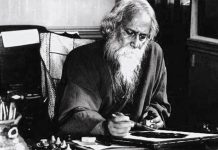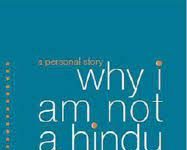Have you been struck by a piece of music that you do not quite understand, but which does not leave you for days? I suspect you have. Think of how you return to it again and again, trying to master it in some way, trying to “parse” the phrases and digest it once and for all so that you may move on with your life. What are you trying to understand, exactly? Suppose that you have understood it; can you put the content of what you have understood into words? Would the words capture the meaning that you make of that experience, or would there be something that is left over of its meaning, impossible to capture in words? What is it that we seek in our encounters with art?
In Tractatus Logico-Philosophicus, the great 20th Century Austrian-British philosopher Ludwig Wittgenstein argued that art, morality and religion circumscribe a realm of values that lies permanently outside the reach of representation in language. He did not mean, of course, that we cannot describe art; in fact, Wittgenstein himself had strong opinions on music and the other arts, and is perhaps the only philosopher to have actually designed a house, an austere beauty that now serves as the Bulgarian embassy in Vienna.
What Wittgenstein means by “value” is what human beings regard as being most important to themselves, goods that add dimensions of meaning to their lives, and which they would go to some lengths to acquire and preserve. Thus someone might save up to buy a boxset of music by a great artist, or, perhaps somewhat sentimentally, visit a town associated with a poet that one reveres. One may be reminded of the Jim Jarmusch film Paterson, which is imbued with the spirit of the poet William Carlos Williams without actually having him for a character.
In what follows, we will focus on only one item in the triad that Wittgenstein called das Mystiche (“the mystical”): we will speak specifically about the meaning of art, and its unique value to human beings. At the end of this exploration, we will have something to say about the pressing need for a curriculum for aesthetic education grounded in philosophically respectable reasons.
In 1926, the poet Rabindranath Tagore gave a deeply reflective address at Dacca University (as it was then called), entitled “The Meaning of Art.” In it, he recounted a funny story about finding on the wall of a school-building in very large words the proclamation: ‘Bipin is an egregious ass!’ “It amused me,” said Rabindranath, “and at the same time offered me an answer to the question, what is art.” Of all the details of the world and his life, the writer of the graffito found it necessary to highlight how he felt about a chap called Bipin! Why? Because, said Rabindranath, while Bipin’s stature or state of health do not make an iota of difference to us, “when we love him or hate him, the fact of Bipin’s existence becomes glowingly evident on the background of passion. Then our mind can no longer remain neutral; it detaches the idea of Bipin from the multitude of what is non-significant to us, and according to its own power our mind tries to make him as unavoidably real to others as he is to us.”
In the above story, Rabindranath condenses a great deal of philosophical wisdom, drawing almost casually upon Rasa theory, and resonating with such extraordinarily fecund minds as Abhinavagupta, the great medieval Kashmiri tantric and aesthetician. Where Rabindranath touches upon the differential powers of artistic self-expression among human beings, he seems to be thinking about the account of pratibhā (literally, the mysterious ability to create an appearance or pratibhāsa of something) that Rasa theorists provide. According to Rabindranath, the ability to envision and create anything—a painting, a school, a neighbourhood—is the ability to “make real” (vyakta) not only an idea that one has, but also one’s own personality, putting on display the possibilities inherent in it through the work that it produces. Making art, in particular, involves dealing with a medium that makes possible the presentation of “an idea” which is often unclear (avyakta) before the act of creation, but which emerges fully formed through the syntax and symbolic possibilities afforded by the chosen medium.
Think of music unaided by lyrics. Those that we describe as great musicians (ustad, maestro, etc.) are known to improvise a great deal, producing variations that they may have not tried before, opening themselves to the possibilities of the moment of creation. Not only do they “think” in the medium of music, but they respond musically to the moment in which they find themselves. To the extent that human beings are what they do, Rabindranath says that artists enjoy the unique privilege of creating (and recreating) themselves and the product of their labours for no other purpose than to display and reaffirm the scope of what human beings can do—i.e., how far they can go in the exploration of an artistic medium. Think momentarily of the Taj Mahal. That structure is not just an astonishing architectural feat; it is an embodiment of human thought and values. One may describe it in language, but it would be misguided to try and comprehend it by analyzing it down to its pieces, because that would be to miss the monument to the memory of human love for the bits of marble. Like all other objects of artistic creation, the Taj Mahal is “its own thing,” replete with meaning, but entirely economical in its symmetry and perfect execution of architectural form. Good poems are like that, as are good novels and great paintings, sculptures, dance performances, films, photographs, etc.
Rabindranath has a great deal to say about the bounded character of the artist’s creation. The author of the graffito on the wall of the school can be said to have given certain “formal” boundaries to his anger at poor Bipin by expressing it in memorable and succinct language, although one might have aesthetically motivated objections to the size of the lettering. To Rabindranath’s mind, the formal boundaries of artistic products afford the perfect analogy for divine creation. On his interpretation of the doctrine of Advaita Vedānta, brahman, the unitary ontological principle that is the ground of the universe, when described by us as the “creator” of the universe, is identical with the world of “name and form” (nāmarūpa) while at the same time transcending it. But brahman in itself is unbounded, unspeakable or impossible to attach predicates to, and hence nirguṇa or without qualities. It is only when it is presented as the world—or expresses itself as the world, serving as the divine analogue to any great musician of your choice—that it becomes available to us as saguṇa brahman (i.e., brahman possessed of qualities) and personal God. In a poetical inversion that highlights this analogy, Rabindranath sometimes addresses God as guṇī —a term normally used to describe great artists. This panentheistic vision is poetically evoked in a Bengali essay titled “Śrābaṇsandhyā”, where Rabindranath describes the close, intimate sound of heavy rain as the forceful entry of the beloved into our hearts. On monsoon evenings, he observes, one eschews discourse for song; this is because the supreme self expressed as the sound of rain seeks both our companionship—a companionship of equals, hence not as “lord” but as “beloved”—and an acknowledgment in kind. The Indian poets and songwriters of yore, says Rabindranath, seemed to understand the aesthetic significance of the monsoon rains in these terms.
Whether or not we accept this poetical rendition of things, can we draw some implications from the foregoing about the value of artistic creations for us? If art is truly the expression of the artist’s self, then it must be accessible as such. This seems about right: stand before a painting by Amrita Sher-gill, and you sense the irrepressible creative motivations of the artist; read poem 36 of Rabindranath’s Balākā, and you are powerfully moved by his feelings that evening by the Jhelum in Kashmir. In art we seem to sense the reality of another’s creative spirit as palpably as we sense our own, especially if the artist is notable not just in technical mastery of her medium, but also in her use of the medium to put herself into her work.
Moreover, Rabindranath writes:
It has been said in the Brihad-Aranyaka:
The desire for the son does not make him dear, the son is dear for the sake of the self.
That is to say, in the son the father becomes conscious of a reality which is immediately and profoundly within him. He is delighted not because his son is perfect and beautiful, but because his son is indubitably real to him—our joy… being the disinterested perception of the real. This is the source of our delight in all arts and literature, where reality is presented to us on the pedestal of its own absolute value (“The Meaning of Art,” p. 853) .
Perhaps what Rabindranath is saying is this. In all great art, we encounter most vividly the idea or thing that was felt as being “indubitably real” to its creator. If we cannot discern the form of that “reality” because the artist’s rendition is complex and demands a great deal more than cursory attention, we find ourselves persevering until we do. (Recall the questions about cognition of musical phrases raised at the beginning.) We value our encounter with an aesthetically pleasing object because it affords us a certain subtle “delight” or aesthetic pleasure. Our pleasure at discerning the features and overall character of great music is not entirely unlike the satisfaction of solving a complex intellectual puzzle, but it is also more than that. It is the pleasure of discovering a new vantage-point, both upon the artist’s vision of reality, and upon the self that captures, however incompletely, the artist’s image of that reality. You crave great music because it reveals a dimension of yourself that would otherwise remain elusive. In the spirit of the Upaniṣad quoted by Rabindranath, one might say that the desire to comprehend art does not make it valuable; art is valuable for the sake of the understanding that it affords to the self. One should add that the understanding being spoken of is not understanding in the sense of discursive analysis of some topic, but the yield of the several dimensions of perception and assimilation of meanings afforded by various artistic media such as music, sculpture, dance and film. Encounter with art adds layers to the self that we would otherwise never suspect we had.
It would appear from this discussion that without a well worked-out programme of aesthetic education, we cannot initiate an encounter with this important dimension of the self.
This is not to say that this encounter cannot happen outside schools and institutions of higher learning: several of us do manage to attend dance classes and find band-mates, whereas most children whose families lack the social and cultural capital that those pursuits entail never do. If the Tagorean argument broached here can be sustained, then it follows that there ought to be persistent and widespread emphasis on the arts and aesthetics in school education, as well as many more serious options for serious engagements with the arts at the post-secondary stage. Arguably, if young people come to understand that there is much more to understand of this world and themselves beyond what is written in school text-books, they would have greater confidence in pursuing such understanding through the arts, and, perhaps, seeking to excel in them.
The question is whether as a society we care enough for the humanity in others to invest in its blossoming along several dimensions, including the aesthetic. If we do not, then we shall see many more generations that miss the chance to explore their full potential as human beings. It is necessary now more than ever to ask ourselves if that is a loss that we can continue to bear.
*The author extends gratitude to two of her musically adept students, Anusha Sharma and Ritu Desai, and colleague Abhijeet Bardapurkar for conversations on topics touched upon in this essay.
Indrani Bhattacharjee teaches philosophy at Azim Premji University, Bangalore. She is engaged in writing a book on the philosophical views of Rabindranath Tagore, circa 1908-1916.










